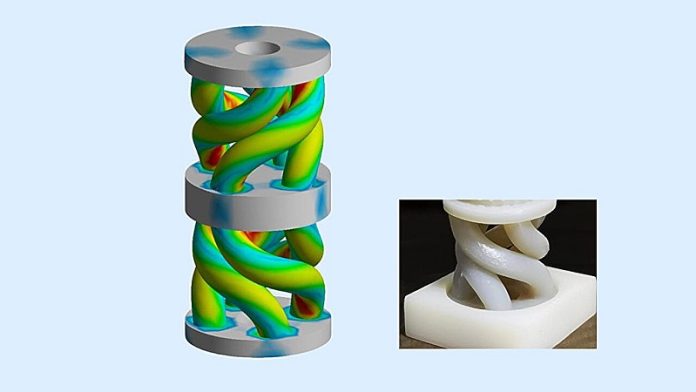
An international team of scientists led by researchers at the Karlsruhe Institute of Technology (KIT) has developed a new type of mechanical metamaterial that can store and release large amounts of elastic energy—just like a super spring.
Their findings were published in the journal Nature.
Mechanical energy storage is essential for many technologies, from springs in machines and robots to shock absorbers in vehicles.
When mechanical energy (like movement or force) is stored, it becomes elastic energy, which can be released later when needed.
The challenge is to find materials that are strong, stiff, and able to stretch or twist a lot without breaking—all at the same time.
It’s hard to get all three features in one material, but that’s exactly what this research team has achieved.
They created a special kind of metamaterial, which is a material made from smaller, carefully designed parts that give it unusual and useful properties. In this case, the researchers used highly twisted rods arranged in a clever pattern.
Professor Peter Gumbsch from KIT, who led the study, explained that the team first discovered a way to store a lot of energy in a single rod by twisting it into a helical (spiral) shape.
Unlike normal bending, which can easily break the material, twisting spreads the stress more evenly and allows the rod to store more energy without being damaged.
Then, by arranging many of these twisted rods together into a larger structure, the team created a metamaterial that could be used in real-world applications.
Computer simulations showed that the material is extremely stiff and can absorb large amounts of force.
When they tested it by squeezing (compressing) different samples, the results matched the predictions.
Even more impressive, the amount of energy this material can store—called enthalpy—was found to be 2 to 160 times higher than other similar materials.
This new material could be used in energy-efficient machines, shock absorbers, robotic joints, or any system that needs to store and release energy smoothly. It could also help make future robots and devices more flexible and durable.
“These twisted metamaterials open the door to many future uses,” said Professor Gumbsch. “They combine strong mechanical performance with efficient energy storage—something we haven’t seen before.”
The researchers are excited about what’s next and believe this new design could inspire even more powerful and practical materials in the future.



